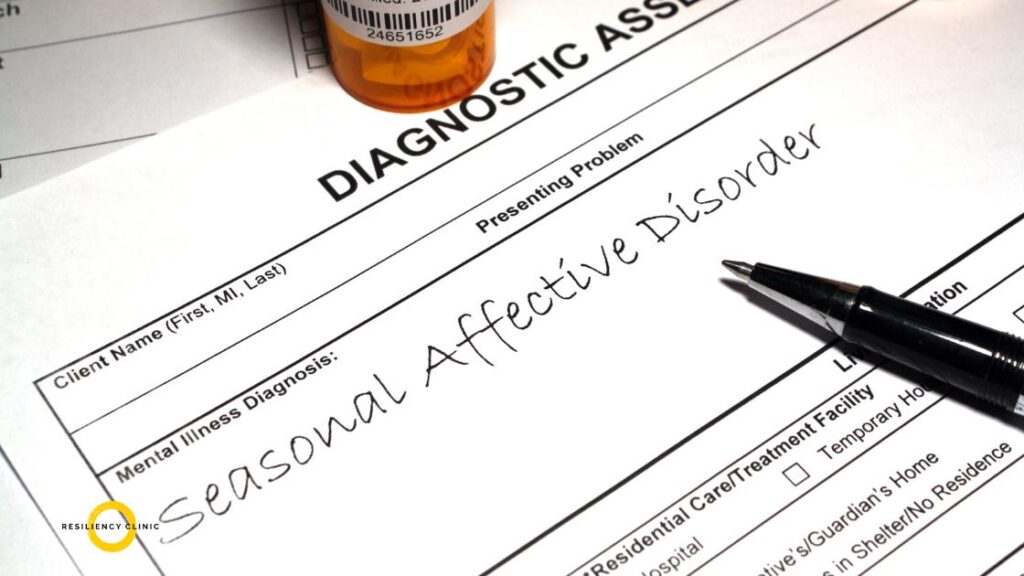Seasonal Affective Disorder (SAD) is a type of depression that typically occurs in a seasonal pattern, often beginning in the fall and continuing into winter. This condition is characterized by feelings of sadness, hopelessness, and lethargy as the days grow shorter. SAD affects millions of individuals, particularly those living in northern latitudes where winter daylight is limited. This article will provide valuable insights into recognizing the symptoms of SAD and explore effective coping strategies to help individuals manage their mental health during the challenging winter months.
What is Seasonal Affective Disorder (SAD)?
SAD is not seen as a distinct diagnostic entity, but instead, it is classified as a recurrent form of major depressive disorder. According to the Diagnostic and Statistical Manual of Mental Disorders (DSM-5), the criteria for diagnosing depression with a seasonal pattern include episodes occurring during specific seasons for at least two consecutive years.

The neurobiological mechanisms behind SAD are still being researched. Still, factors such as disrupted circadian rhythms, alterations in melatonin and serotonin levels due to reduced daylight exposure, and potential vitamin D deficiencies have all been indicated as contributing factors to this condition. Individuals who are more sensitive to changes in daylight may find their moods significantly affected by shorter days.
Symptoms of Seasonal Affective Disorder
Individuals experiencing SAD may encounter an array of symptoms, including:
- Persistent low mood: Feelings of sadness or hopelessness most of the day, nearly every day.
- Loss of interest: A disinterest in activities once enjoyed, such as hobbies, social events, or family gatherings.
- Changes in appetite: Increased cravings for carbohydrates, leading to potential weight gain, or decreased appetite as some may experience a loss in interest in food.
- Sleep disturbances: Excessive sleepiness (hypersomnia) or insomnia, with individuals feeling unrested despite lengthy sleep as their bodies attempt to compensate for depression.
- Fatigue: Low energy levels, profound fatigue, or feelings of being physically slowed down are common.
- Difficulty concentrating: A decline in cognitive functions, with trouble focusing on tasks or making decisions.
- Social withdrawal: Increased isolation from friends and family, leading to feelings of loneliness.
Identifying these symptoms early is crucial. If an individual notices persistent symptoms, it may be indicative of SAD and seeking help is essential.
Recognizing When to Seek Help
If symptoms of SAD significantly interfere with daily functioning or persist for more than two weeks, it is vital to consult a mental health professional. They can provide a proper diagnosis and collaborate with the individual to formulate a treatment plan tailored to their specific needs.
Early intervention is key, as SAD can worsen if left unaddressed, leading to more severe episodes and disruption in daily life. Speaking with a counsellor, psychologist, or psychiatrist allows for exploring various treatment avenues that may be effective.

Effective Coping Strategies for SAD
1. Light Therapy
Light therapy involves exposure to bright artificial light that mimics sunlight. This treatment has been substantiated as effective for many individuals experiencing SAD by correcting the disrupted circadian rhythms associated with reduced daylight. To achieve the best results with light therapy, individuals are encouraged to use a light box that emits 10,000 lux of light daily, particularly during the early fall and winter months when SAD is most prevalent.
Light therapy generally requires daily sessions for approximately 20 to 30 minutes in order to stimulate serotonin production and ameliorate symptoms associated with depression. Users should sit close to the light source or place it at eye level while engaging in normal activities, such as reading or working.
2. Structured Routines
Establishing a consistent daily schedule for sleeping, meals, and activities can help regulate mood and energy levels. Aim for seven to nine hours of sleep each night, maintaining regular wake-up and sleep times, even on weekends.
A structured routine can include:
- Setting regular meal times.
- Creating a morning and evening schedule.
- Engaging in regular physical activity as part of the daily plan.
By ensuring consistency in daily activities, individuals may help their bodies stabilize their natural rhythms and minimize SAD-related mood fluctuations.
3. Physical Activity
Engaging in regular physical activity can boost mood and reduce symptoms of depression. Outdoor exercise offers the added benefit of direct sunlight exposure, which can enhance serotonin levels. Activities such as brisk walking, jogging, cycling, swimming indoors, or participating in group classes can be particularly beneficial as they not only provide physical benefits but can also be socially uplifting. Aim for at least 30 minutes of moderate exercise most days of the week to reap these benefits.
Additionally, outdoor winter sports such as skiing or ice skating can help individuals enjoy winter while staying active, which is crucial for managing SAD.
4. Healthy Diet
A well-balanced diet is vital for overall mental health. Consuming nutrient-dense foods rich in omega-3 fatty acids (e.g., fish, flaxseeds), fruits, vegetables, whole grains, and lean proteins can help stabilize mood. Reducing sugar and processed foods can also alleviate symptoms associated with SAD.
Moreover, maximizing the intake of foods rich in vitamin D is advisable for individuals with SAD, as studies have indicated a correlation between vitamin D deficiency and depressive symptoms. Foods like fortified dairy products, orange juice, and fatty fish should be incorporated for optimal benefits. Moreover, consider discussing supplementation with a healthcare provider if dietary intake is not sufficient.
5. Social Connections
Maintaining social ties is crucial in combating feelings of isolation that often accompany SAD. Plan social activities or reach out to friends and family to foster connections. Engaging with others not only helps lift mood but can also provide emotional support during challenging times. Joining support groups can also provide valuable interactions and shared experiences for managing SAD and is coupled with a sense of community.
6. Mindfulness and Stress Management
Incorporating mindfulness practices, such as meditation, deep breathing exercises, or yoga, can aid in reducing stress and promoting emotional well-being. Techniques that encourage relaxation can be effective in managing the symptoms of SAD.
Consider starting a daily mindfulness routine that lasts between 10 to 20 minutes, focusing on breathing, body sensations, or guided visualization. Many apps and online resources are available to help initiate mindfulness practices.
7. Professional Help and Treatment Options
If self-help strategies are insufficient, professional treatments, including Cognitive Behavioral Therapy (CBT) or medication, may be necessary. CBT is a widely recognized therapeutic approach that focuses on identifying and altering negative thought patterns and behaviours. A therapist can help individuals navigate through these thought processes and develop effective coping strategies tailored to their unique experiences.
Consulting with a physician or psychiatrist about medication options is also recommended. These may include antidepressants, which can be particularly effective for severe cases of SAD.

Managing Seasonal Affective Disorder (SAD): Conclusion
Recognizing and managing Seasonal Affective Disorder (SAD) is crucial for maintaining mental well-being during the challenging winter months. Awareness of symptoms and the implementation of effective coping strategies can empower individuals to combat the impacts of SAD. Early intervention and seeking professional help when needed are key to managing this condition successfully.
Seasonal Affective Disorder (SAD): Frequently Asked Questions
- What is Seasonal Affective Disorder (SAD)?
Seasonal Affective Disorder (SAD) is a type of depression that typically occurs in the fall and winter months when there is less natural sunlight. Symptoms include persistent sadness, changes in sleep and appetite, and difficulty concentrating. - How can I tell if I have SAD?
Symptoms of SAD include low mood, lack of interest in activities, changes in sleep patterns, and social withdrawal. If these symptoms persist for more than two weeks during the winter months, it may indicate SAD. - Can SAD affect children and teenagers?
Yes, SAD can affect individuals of all ages, including children and teenagers. Parents need to recognize symptoms in younger individuals and seek help when necessary. - What treatments are available for SAD?
Treatments for SAD may include light therapy, cognitive behavioural therapy, medication, lifestyle changes, and building a support system. It is best to consult with a mental health professional for personalized recommendations. - What lifestyle changes can help with SAD?
Lifestyle changes such as maintaining a regular exercise routine, eating a balanced diet, practicing mindfulness, and engaging in social activities can significantly help manage SAD symptoms. - How can support groups assist in managing SAD?
Support groups provide a space for individuals to share their experiences, gain insights from others facing similar challenges, and build a sense of community that can be uplifting and encouraging during difficult times.
More from our editorial
- Understanding the Impact of Childhood Experiences: Provides insights into how early experiences affect mental health.
- The Importance of Mental Health Days: Highlights the significance of self-care and mental health awareness.
- Managing Anxiety and Depression: Offers additional strategies that can complement approaches for SAD.
References
- Mayo Clinic. (2025). Seasonal Affective Disorder (SAD): Symptoms & Causes.
- American Psychiatric Association. (2025). A Guide to Seasonal Affective Disorder.
- Mental Health Foundation. (2025). Managing Seasonal Affective Disorder.
- Healthline. (2025). Seasonal Affective Disorder: Symptoms, Causes, Treatment.
- WebMD. (2025). Seasonal Depression: Overview and Coping Strategies.






